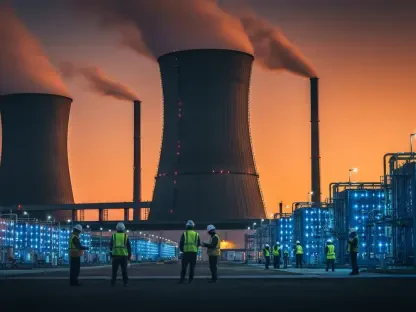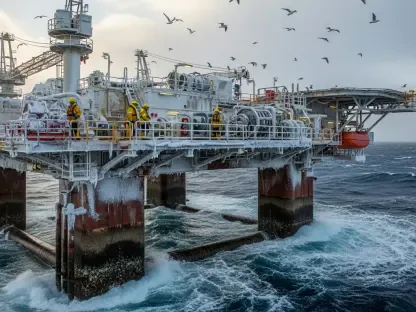Introducing Christopher Hailstone, an esteemed expert in energy management and renewable energy, who is known for his deep insights into electricity delivery and grid reliability. Christopher joins us to discuss India’s emerging influence on global energy markets, at a time when the global oil landscape is fraught with challenges. We’ll delve into India’s energy strategies, including its diversification efforts, reliance on Russian oil, and the transition to cleaner energies, while addressing the complexities of balancing growth with sustainability.
What key factors are contributing to India’s rising influence in global energy markets?
India’s demand for energy is skyrocketing, driven by robust demographic and economic growth. The sheer size of its population means even a small percentage increase in energy demand has substantial implications globally. Furthermore, India is committed to diversifying its energy sources, ensuring its burgeoning demand doesn’t translate into over-reliance on traditional suppliers. This proactive approach is giving India a more significant role in shaping energy markets worldwide.
How is India addressing the challenges posed by the current global oil market conditions?
Amidst global uncertainties, particularly in oil markets, India is strategically aligning itself by diversifying its oil import sources, including increased engagement with Russian suppliers. This move helps India mitigate risks associated with global price volatility and geopolitical tensions, ensuring stable energy supplies that support its domestic needs.
Can you elaborate on India’s efforts to diversify its energy supply sources?
India is making robust efforts to broaden its energy base by tapping into various global and domestic resources. It seeks to reduce its over-dependence on Middle Eastern oil by engaging with countries like Russia and investing in renewable sources. The nation’s approach embraces both geopolitical strategies and sustainable energy development to build a resilient energy infrastructure.
Why has India increased its reliance on Russian oil, and what impact does this have on global energy patterns?
India’s increased reliance on Russian oil serves both economic and strategic purposes. From an economic standpoint, Russian oil provides a competitive pricing advantage, which is crucial for a growing economy. Strategically, diversifying suppliers aids in energy security, reducing vulnerability to disruptions from any single region. This shift has reinforced Russia’s role in the global energy market and highlighted India’s significance as a versatile and strategic energy consumer.
Could you define the “energy trilemma” mentioned in the report, and how is India managing it?
The “energy trilemma” refers to the delicate balance between energy security, environmental sustainability, and economic competitiveness. India tackles this by heavily investing in renewable energy, improving energy efficiency, and yet maintaining coal and oil in its mix for immediate energy needs. This multifaceted approach aims to harmonize environmental goals with the imperative for economic growth and energy reliability.
With India focusing on cleaner energy options, how does the country plan to balance between economic growth and environmental sustainability?
Balancing economic growth with environmental goals is a key focus for India. The country’s strategy revolves around accelerated investment in renewables like solar and wind, along with enhanced biofuel production. Meanwhile, India ensures that its burgeoning population and industries have access to the energy needed for growth, attempting to minimize environmental impacts through cleaner technologies and policies.
How important is India’s biofuels industry in its energy transformation strategy?
India’s biofuels sector is becoming increasingly vital, providing a sustainable alternative to traditional fuels. By cultivating a domestic biofuels market, India not only reduces import reliance but also supports rural economies through biofuel production. This industry aligns well with sustainability goals while contributing significantly to energy security.
What specific steps is India taking to meet its bioethanol blending target of 20%?
To achieve the 20% bioethanol blending target, India is boosting its ethanol production capabilities by expanding sugarcane cultivation, which is a primary raw material. This involves capacity development in ethanol distillation and incentivizing farmers and producers. The government is also creating favorable policies and infrastructure to ensure efficient distribution and integration into the traditional fuel mix.
What challenges does India face in scaling up bio-CNG production?
Scaling up bio-CNG production poses challenges, such as the need for technological advancements and the establishment of dedicated infrastructure. There are also economic hurdles, including ensuring the affordability of inputs and overcoming market entry barriers. Overcoming these challenges requires concerted efforts from both the public and private sectors, along with policy frameworks that incentivize production and usage.
How do rapid urbanization and economic growth in India influence its energy demand?
India’s rapid urbanization and economic expansion significantly drive energy demand. Urban populations require extensive infrastructure, housing, transportation, and services, all of which are energy-intensive. This urban shift, coupled with economic growth, means greater energy consumption patterns that need sustainable management.
Could you explain how India’s coal demand is expected to change by 2050?
By 2050, India’s coal demand is projected to escalate by about 60%. Although India is diversifying energy sources, coal remains a staple due to energy affordability and availability, particularly for power generation and industries. This creates a challenge in balancing coal use with environmental and sustainability commitments.
What factors are driving the growth in India’s domestic coal production?
Several factors propel the growth of India’s domestic coal production. Chiefly, there’s a robust demand from the power and industrial sectors needing reliable and cost-effective energy. Additionally, government initiatives in mine mechanization and favorable auction processes are enticing private sector participation, enhancing production capacities and efficiencies.
How does the non-power sector contribute to India’s imported coal needs?
The non-power sector significantly impacts India’s imported coal requirements, primarily through industries like steel and cement, which necessitate quality coal not always available domestically. Importing high-grade coal complements domestic supply, sustaining industrial output while meeting quality standards essential for these sectors.
What role does the private sector play in achieving India’s coal production targets?
The private sector plays a pivotal role by offering technological innovation, investment capacity, and operational efficiencies that the public sector often lacks. Through partnerships, strategic investments, and exploitation of allocated mines, the private sector boosts production, helping India meet its ambitious coal output targets.
How are population growth and increased access to electricity expected to impact India’s energy demand?
Population growth and improved electricity access naturally lead to heightened energy demand. As more people gain electricity access with rising living standards, consumption patterns intensify, requiring reliable energy infrastructure and innovative solutions to balance supply with increased demand effectively.
What are the current trends in India’s crude oil import dependence?
India’s crude oil dependency remains high, currently at about 87.7%. The country continues to seek diversification in its sources while steadily increasing local production capacity. Efforts also include strategic reserves and refining capacity enhancement to mitigate international supply risks.
Do you foresee any major shifts in India’s energy policy in the near future, given its current dependence on fossil fuels?
India may be inclined towards policies that progressively increase the share of renewables in its energy mix while enhancing energy efficiency across sectors. Keeping national growth ambitions aligned with global environmental commitments could prompt significant shifts toward integrating cleaner technologies within existing frameworks.
What is your forecast for India’s energy transition in the coming decade?
India will likely see a robust expansion in renewable energy capacity, driven by policy incentives and technology advancements. Simultaneously, there will be an increased effort toward energy efficiency and clean fuel adoption in transportation and industry, ensuring an optimal balance between economic growth and sustainability.









